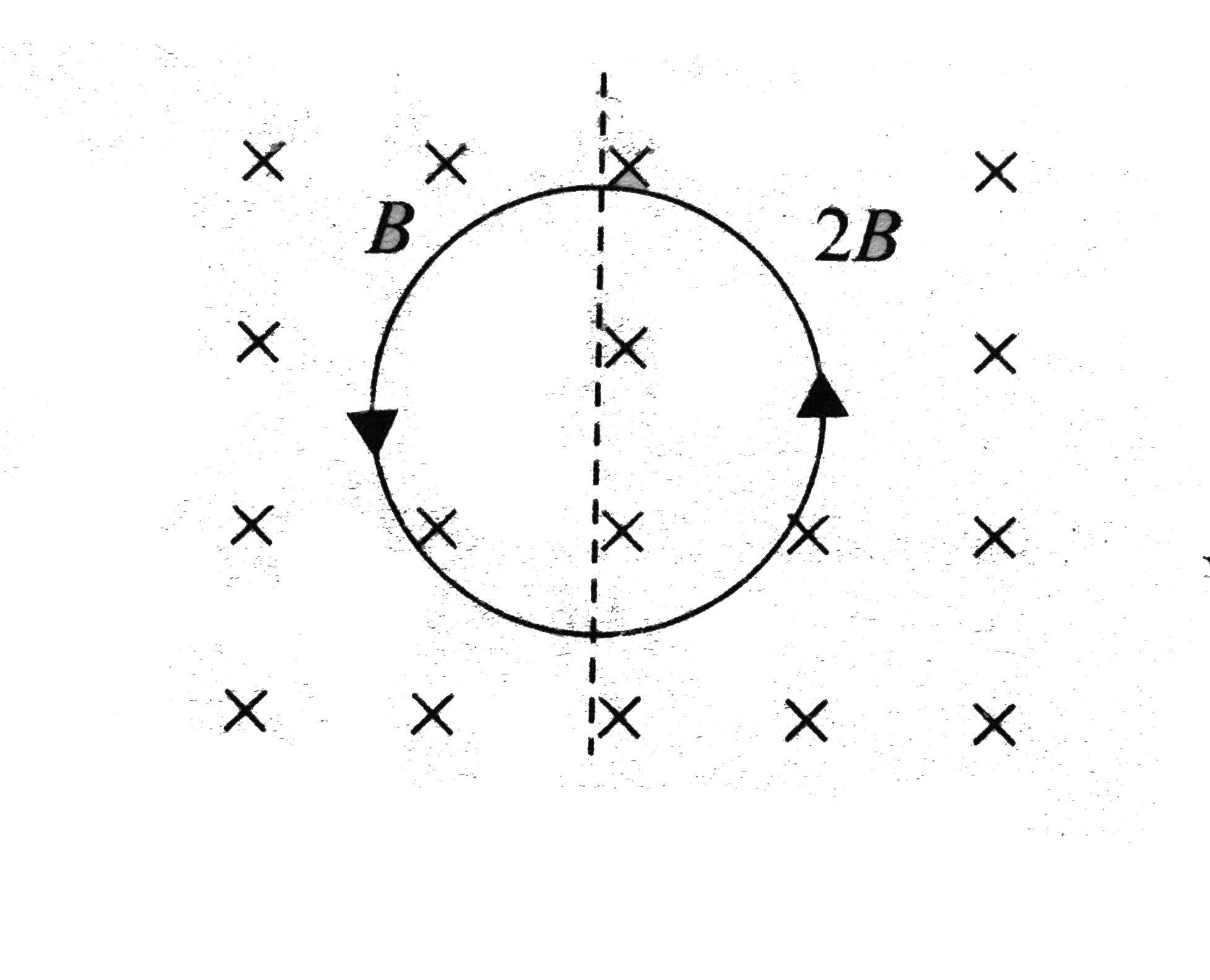A: The magnetic field lines also represent the lines of force on a moving charged particle at every point.
R: Force on a moving charge acts parallel to the magnetic field.
If both Assertion & Reason are the true and the reason is the correct explanation of the assertion, then mark (1)
If both Assertion & Reason are true but the reson is not the correct explanation of the assertion, then mark (2)
If Assertion is true statement but Reason is false, then mark (3)
If both Assertion and Reason are false statements, then mark (4)
The correct Answer is:D
To solve the question, we need to analyze both the assertion (A) and the reason (R) provided.
1. Understanding the Assertion (A):
- The assertion states: "The magnetic field lines also represent the lines of force on a moving charged particle at every point."
- Magnetic field lines indicate the direction of the magnetic field at various points in space. However, they do not represent the lines of force acting on a moving charged particle. The force experienced by a charged particle moving in a magnetic field is determined by the Lorentz force law.
2. Understanding the Reason (R):
- The reason states: "Force on a moving charge acts parallel to the magnetic field."
- According to the Lorentz force law, the force F on a moving charge q in a magnetic field B is given by the equation:
F=q(v×B)
- This equation indicates that the force is perpendicular to both the velocity v of the charge and the magnetic field B. Therefore, the statement that the force acts parallel to the magnetic field is incorrect.
3. Conclusion:
- Since both the assertion and the reason are false, we conclude that both statements do not hold true.
Final Answer:
Both the assertion (A) and the reason (R) are false.
- The assertion states: "The magnetic field lines also represent the lines of force on a moving charged particle at every point."
- Magnetic field lines indicate the direction of the magnetic field at various points in space. However, they do not represent the lines of force acting on a moving charged particle. The force experienced by a charged particle moving in a magnetic field is determined by the Lorentz force law.
- The reason states: "Force on a moving charge acts parallel to the magnetic field."
- According to the Lorentz force law, the force F on a moving charge q in a magnetic field B is given by the equation:
F=q(v×B)
- This equation indicates that the force is perpendicular to both the velocity v of the charge and the magnetic field B. Therefore, the statement that the force acts parallel to the magnetic field is incorrect.
- Since both the assertion and the reason are false, we conclude that both statements do not hold true.
Both the assertion (A) and the reason (R) are false.
Topper's Solved these Questions
- MAGNETISM AND MATTER Book:AAKASH INSTITUTE ENGLISHChapter:MAGNETISM AND MATTER Exercise:ASSIGNMENT (SECTION C)
Explore 34 Videos
- LAWS OF MOTIONBook:AAKASH INSTITUTE ENGLISHChapter:LAWS OF MOTIONExercise:Assignment (SECTION-D) (Assertion-Reason Type Questions)
Explore 15 Videos
- MECHANICAL PROPERTIES OF FLUIDSBook:AAKASH INSTITUTE ENGLISHChapter:MECHANICAL PROPERTIES OF FLUIDSExercise:SECTION - J
Explore 9 Videos
Similar Questions
When does a moving charged particle not experience any force while moving through a uniform magnetic field ?
View SolutionA: The magnetic field always accelerates a moving charge if the moving charge cuts the field lines.
R: When a moving charge cuts the magnetic field lines, the magnetic force on the charge is always non zero.
View Solution
Knowledge Check
Assertion : Magnetic field interacts with a moving charge and not with a stationary charge.
Reason : A moving charge produces a magnetic field.AIf both assertion and reason are true and reason is the correct explanation of assertion.BIf both assertion and reason are true but reason is the correct explanation of assertion.CIf assertion is true but reason is falseDIf both assertion and reason are false.
The mathematical equation for magnetic field lines of force is
View SolutionStatement 1: A magnetic field independent of time can change the velocity of a charged particle.
Statement 2: It is not possible to change the velocity of a particle in a magnetic field as magnetic field does no work on the charged particle.
View SolutionSuppose that an electric charge moves in a magnetic field in a plane perpendicular to the lines of induction. Prove that the orbital magnetic moment of the circulating charge is directed against the field.
View SolutionWhen would a moving charged particle travel undeviated in a uniform magnetic field ?
View SolutionA: The trajectory of a charge when it is projected perpendicular to an electric fiedl is a parabola.
R: A moving charge entering parallel to the magnetic field lines moves in a circular path.
View SolutionA: The work done by magnetic field on a moving charge is zero.
R: The magnetic force acting on a moving charge has no component in the direction of velocity.
View SolutionStatement 1: The magnetic field as magnetic field does no work on the charged particle.
Statement 2: force (magnetic) on the wire is ∫dF=∫×→B

View Solution
